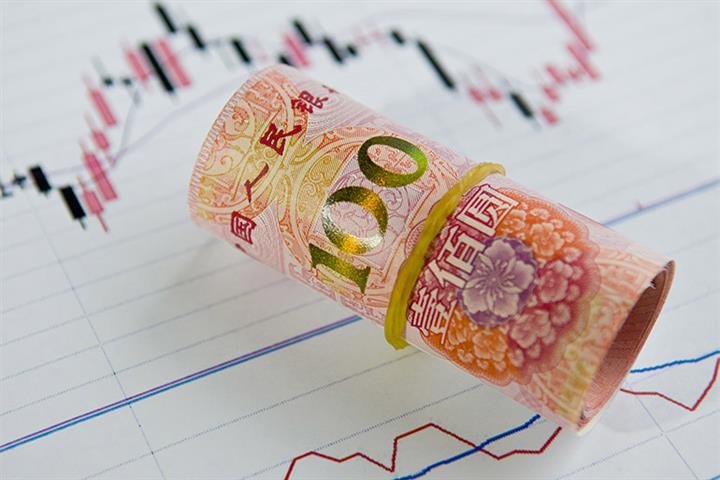 Yuan's Gains Versus US Dollar Could Lose Steam in 2022
Yuan's Gains Versus US Dollar Could Lose Steam in 2022(Yicai Global) Feb. 8 -- The driving force that pushes the Chinese yuan to become stronger against the US dollar is expected to weaken as exchange rate volatility has resumed this year.
Since last September, Chinese companies have increased their foreign exchange settlement or made cross-border payments with their own forex funds to avoid the impact of intensive foreign exchange settlement late last year.
From September to December, China's trade surplus jumped 31 percent from a year ago. Meanwhile, the surplus of foreign exchange settlements and sales by banks fell 22 percent. This is an important market logic that caused the US dollar index to hit a new high. Consequently, the US dollar got stronger while the yuan appreciated, and the redback's exchange rate decoupled from the earlier trend.
The renminbi's exchange rate and the US dollar index have resumed a seesaw-like pattern this year. The US dollar index went up but soon declined in early and mid-January, falling below 96 and 95, which was the main reason for the yuan exchange rate to get firmer. The US dollar index climbed above 97 late last month, resulting in a correction of the yuan's exchange rate.
The momentum for the redback's strengthening is likely to weaken.
First, foreign exchange transactions in the domestic interbank market have dropped. Foreign exchange transactions in the interbank market totaled USD30.8 billion last month, down 8 percent from the previous month and 15 percent lower from a year earlier. The average daily transaction volume was the lowest since 2019. The domestic connection between foreign exchange supply and demand has been generally improving after the Chinese New Year with financial accounting and a strong yuan payments demand.
Second, yuan-denominated bilateral and multilateral exchange rate gains have been getting smaller.
The yuan was becoming stronger against the US dollar in January 2021 due to the nearly USD100 billion surplus of foreign exchange settlements and sales by the end of 2020, so the renminbi's exchange rate against the greenback moved below 6.50. The US dollar index fell by up to 0.6 percent last January, and the exchange rate slid by a maximum of 1.3 percent. The rate did not go below 6.30 last month even though China’s imports and exports resulted in a trade surplus of nearly USD100 billion last December. The maximum decrease in the exchange rate did not exceed 1 percent in January with a maximum drop of 1.1 percent in the US dollar index.
The exchange rate may deviate from the equilibrium level in the short term, but market and policy factors will correct the deviation in the medium and long term, the People’s Bank of China noted early this year.
The driving force for the yuan's exchange rate to get firmer has weakened based on year-on-year and month-on-month comparison as stated above. Analysts and investors better pay attention to the possible exchange rate correction by market or policy factors rather than forecasting whether the redback-greenback rate will go below 6 or not.
(The author is BOC International China's global chief economist.)
Editor: Emmi Laine, Xiao Yi